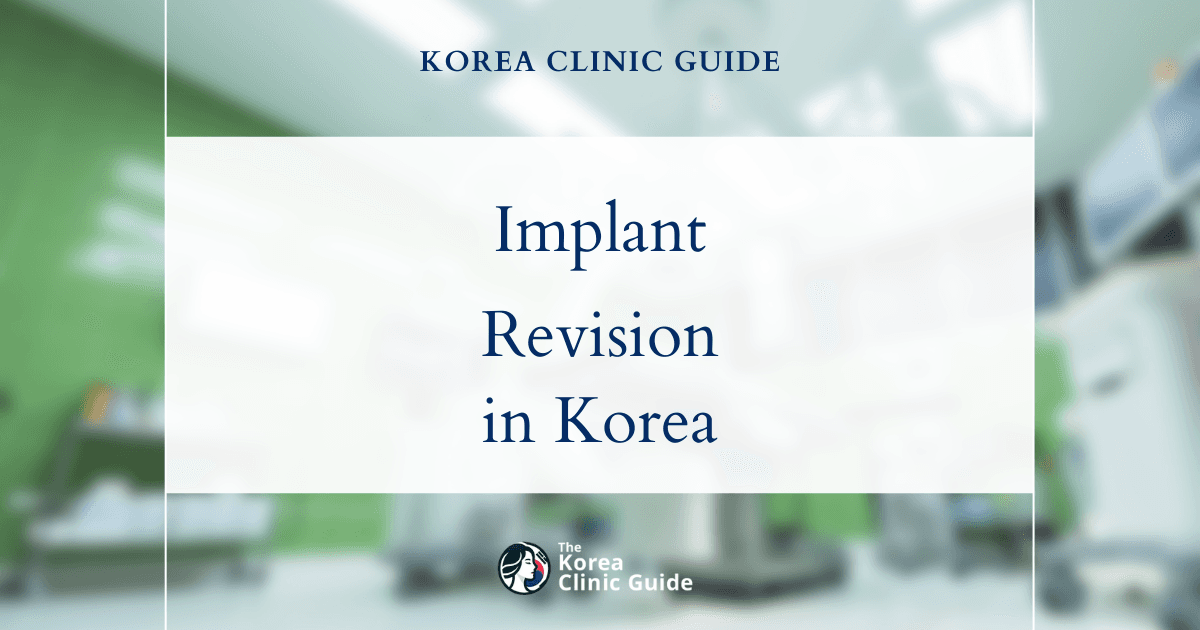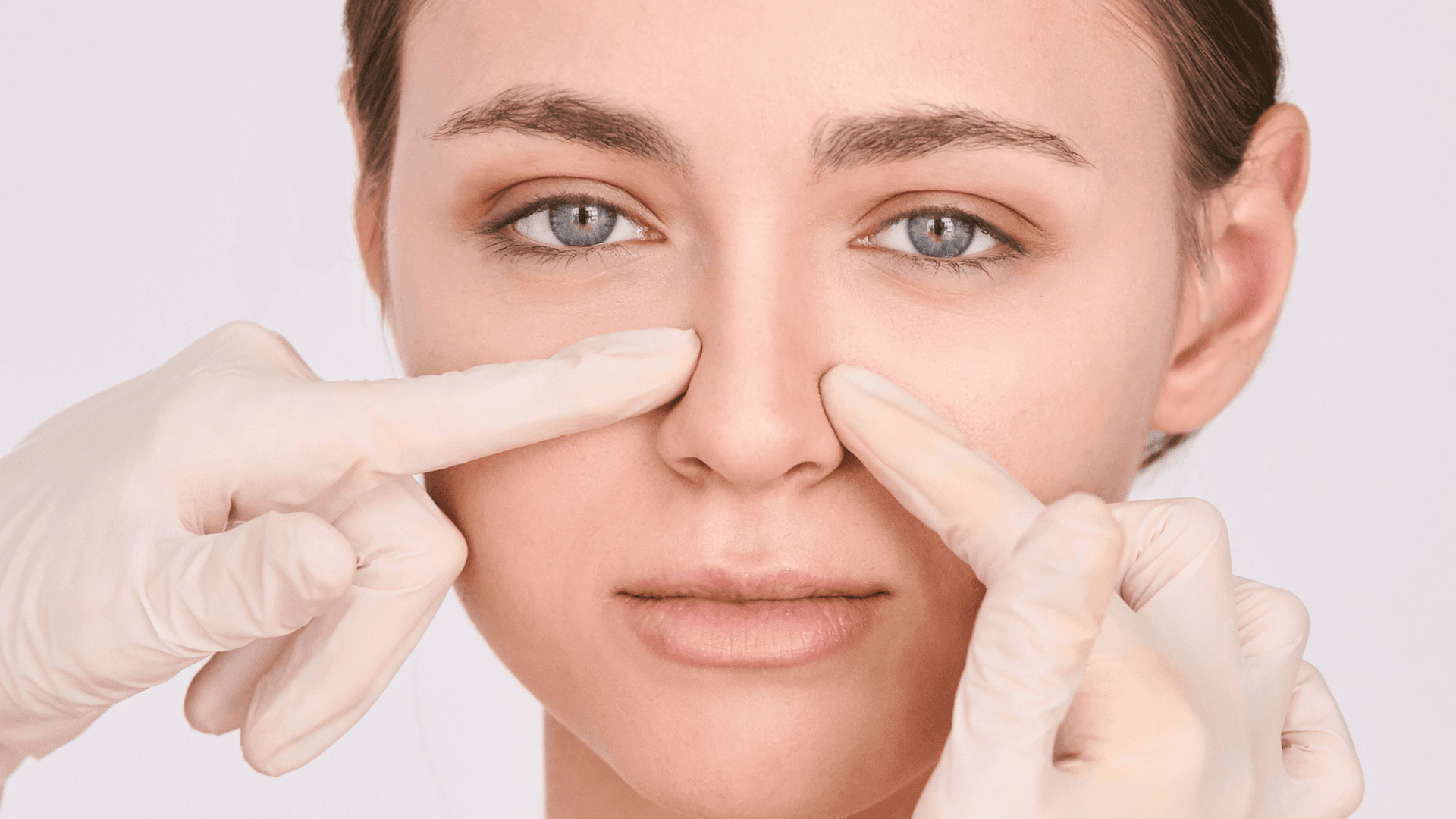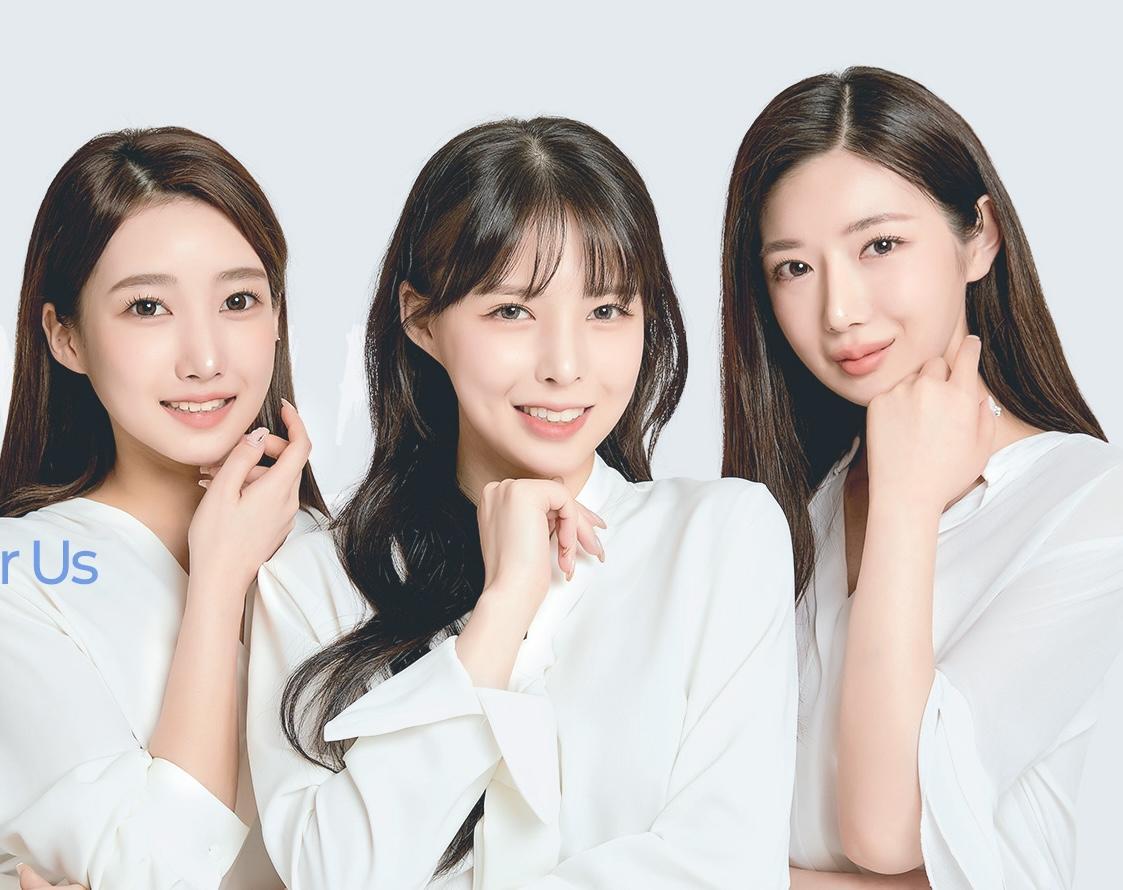Medical Tourism Blog
Effective Solutions for Nasal Crusting in Korea: Septoplasty Procedure Options

Table of contents
- Septoplasty: A Detailed Overview of the Procedure
- Best Clinics in Korea for Nasal Crusting
- Navigating Septoplasty in South Korea: A Medical Tourist's Journey
- Costs of Septoplasty: South Korea vs. Global Medical Tourism Destinations
- Patient Outcomes: Septoplasty's Impact on Nasal Crusting and Quality of Life
- Conclusion
- References
Nasal crusting, often described as "crust formation from a dry airway," is a common and uncomfortable symptom that can seriously affect quality of life. It may cause persistent obstruction, discomfort, and even frequent nosebleeds. For those struggling with this condition, finding effective and lasting relief is crucial. While many factors can cause chronic nasal dryness and crusting, a deviated septum—a structural issue disrupting normal airflow—often plays a major role. Septoplasty, a surgical procedure to correct a deviated septum, is a key option for patients seeking durable improvement. This guide explores nasal crusting in detail, explains the Septoplasty procedure, and offers advice for patients considering treatment in South Korea, a leading destination for medical tourism.
Nasal crusting happens when dried mucus, blood, or debris build up inside the nasal passages. It usually starts from an overly dry nasal environment where the mucous membranes can’t stay properly moist.
What is Nasal Crusting? Definition and Common Pseudonyms
Crust formation in the nose can be linked to several conditions, each with unique features:
- Atrophic Rhinitis (AR): This medical term describes chronic nasal dryness and crusting, often with a foul odor. It occurs when nasal tissue thins and hardens, widening the nasal cavities and causing dry passages where crusts form. Primary AR is rare in North America but more common in hot, dry climates like India and Saudi Arabia. Secondary AR often affects people after sinus surgeries such as turbinectomy.
- Nasal Vestibulitis: A minor bacterial infection, usually caused by Staphylococcus bacteria, affecting the nasal vestibule (just inside the nostrils). It can cause pimples at the base of nasal hairs and crusts around the nostrils, often triggered by nose picking or excessive blowing.
- Dry Sinuses: A general term for uncomfortable dryness in the nose and airways due to reduced mucus production, which can lead to crusting and nosebleeds.
The phrase "crust formation from dry airway" mainly points to Atrophic Rhinitis and dry sinuses rather than localized bacterial infections. This distinction matters because Septoplasty targets structural problems like a deviated septum that cause airflow disruption and dryness, rather than infections or environmental dryness alone. Understanding this helps patients realize that while home remedies may ease general dryness, persistent or foul-smelling crusting might indicate underlying conditions needing surgical evaluation.
Exploring the Causes: From Environmental Factors to Underlying Medical Conditions, Including the Role of a Deviated Septum
Nasal crusting can arise from many causes:
- Environmental Factors: Dry air, especially in low-humidity settings, worsens dry sinuses and crusting. Older adults and mouth breathers are more vulnerable.
- Dehydration: Not drinking enough fluids dries out mucous membranes, including in the sinuses.
- Irritants: Exposure to chemicals, strong scents, and smoke thickens mucus and slows its flow, increasing dryness.
- Medications: Some allergy drugs (antihistamines), decongestants, and immunosuppressants dry out nasal tissues.
- Medical Conditions:
- Atrophic Rhinitis: Caused by allergies, infections, hormone imbalances, nutritional deficiencies, congenital changes, autoimmune diseases (like Sjogren's syndrome), radiation, trauma, or chronic decongestant use.
- Nasal Vestibulitis: Triggered by Staphylococcus bacteria, often from nose picking or blowing.
- Deviated Septum: A crooked or displaced nasal septum blocks airflow, exposing mucous membranes to drying air, leading to crusting and bleeding. It also causes congestion, sinus infections, nosebleeds, headaches, facial pain, and sleep difficulties.
A deviated septum disrupts the normal humidified airflow, creating dry spots that form crusts. This explains why structural problems may not respond fully to home or medical treatments alone, highlighting Septoplasty as a targeted solution for persistent crusting linked to airflow issues.
Recognizing the Symptoms and When to Seek Professional Medical Advice
Knowing the signs of nasal crusting and when to see a doctor is vital:
- Common Symptoms: Foul-smelling crusts inside the nostrils (often unnoticed by the patient), chronic nosebleeds, pus discharge, nasal dryness, reduced smell, and bad breath.
- Symptoms of Deviated Septum: Chronic nasal blockage, recurrent sinus infections, nosebleeds, headaches, facial pain, difficulty breathing through the nose (especially during sleep), snoring, and sleep apnea.
If multiple symptoms overlap—persistent crusting with breathing problems, frequent nosebleeds, or infections—it’s important to get evaluated for a deviated septum by an ENT specialist.
- When to Consult a Healthcare Provider: Seek medical advice if you have trouble breathing, loss of smell, chronic cough, ongoing dryness and crusting, nasal obstruction, or recurrent nosebleeds. If symptoms don’t improve with home care or suggest infection, professional treatment is necessary.
Initial Home and Medical Management Strategies
Treatment often starts conservatively:
-
Home Remedies:
- Use nasal sprays or drops to lubricate passages.
- Increase humidity with a humidifier.
- Rinse nasal passages with saline irrigation.
- Stay well hydrated.
- Inhale steam from showers or baths.
- Avoid dry environments and irritants.
- Elevate the head during sleep to reduce swelling.
-
Medical Management (Non-Surgical):
- Mupirocin ointment for bacterial infections like nasal vestibulitis.
- Oral antibiotics for furuncles or sinus infections.
- Nasal corticosteroids to reduce inflammation.
- Antihistamines for runny nose (note some cause dryness).
- Decongestants for short-term relief (limit use to 3 days).
- For atrophic rhinitis, treatments focus on symptom control with irrigation, paraffin or glycerin drops, antibiotics, and vitamins.
However, structural issues like a deviated septum may not improve with medical treatment alone. Studies show patients with secondary atrophic rhinitis linked to septal deviation often don’t respond after six months of conservative care, indicating surgery may be necessary.
Table 1: Common Pseudonyms and Associated Conditions for Nasal Crusting
| Pseudonym | Description | Common Causes | Key Symptoms | Typical Initial Management |
|---|---|---|---|---|
| Atrophic Rhinitis (AR) | Chronic dryness and crusting due to thinning/hardening of nasal tissue, widening nasal cavities. | Primary: Hot, dry climates, allergies, infections, hormone imbalances, nutritional deficiencies, congenital changes. Secondary: Sinus surgeries, autoimmune diseases, infections, radiation, trauma, decongestant overuse. | Foul-smelling crusts, chronic nosebleeds, pus discharge, dryness, reduced smell, bad breath. | Nasal sprays/drops, humidifiers, saline irrigation, antibiotics, multivitamins; no cure, symptom management. |
| Nasal Vestibulitis | Minor bacterial infection at nostril opening. | Nose picking, excessive nose blowing. | Pimples at nasal hair base, crusts around nostrils, bleeding when crusts fall off. | Mupirocin ointment, oral antibiotics for furuncles, moist hot cloths. |
| Dry Sinuses | Uncomfortable dryness due to reduced mucus production. | Dry air, dehydration, irritants, medications, Sjogren's syndrome. | Dryness, crusting, nosebleeds, thick mucus buildup. | Humidifiers, steam inhalation, nasal sprays/drops/gels, hydration, avoid irritants, medication review. |
Septoplasty: A Detailed Overview of the Procedure
Septoplasty is surgery to correct a deviated nasal septum, aiming to improve breathing and relieve related symptoms.
Purpose of Septoplasty: Correcting a Deviated Septum to Improve Breathing and Alleviate Related Symptoms
The nasal septum divides the nose into two nostrils. When crooked or displaced, it blocks airflow. Septoplasty straightens the septum by trimming, repositioning, or removing cartilage and bone to enhance airflow.
Indications include chronic congestion, recurrent sinus infections, frequent nosebleeds, headaches, facial pain, breathing difficulties (especially during sleep), snoring, and sleep apnea. It also helps treat long-term sinusitis and facilitates nasal polyp removal.
A deviated septum increases drying airflow exposure, causing crusting and bleeding. Septoplasty improves airflow and can reduce these symptoms. In secondary atrophic rhinitis caused by septal deviation, combining Septoplasty with turbinate reconstruction shows dramatic improvement in crusting.
While Septoplasty can be combined with rhinoplasty for cosmetic changes (septorhinoplasty), about 75% of these surgeries focus on function, not appearance. This distinction helps manage expectations and reassures patients concerned about cosmetic outcomes.
Preparing for Your Septoplasty: Essential Pre-Operative Steps and Considerations
Proper preparation ensures success:
- Medical History Review: Surgeon reviews health history and current medications.
- Physical Exam: Checks internal and external nasal structures.
- Diagnostic Tests: Blood tests, CT scans, nasal endoscopy for detailed anatomy.
- Photographs: Taken for surgical reference and discussion of possible external changes.
- Discussion of Goals: Clear conversation about expectations and outcomes.
- Medication Adjustments: Stop aspirin, ibuprofen, blood thinners ~2 weeks before surgery.
- Smoking Cessation: Recommended to reduce complications.
- Fasting: No food or drink after midnight before surgery.
- Anesthesia: Usually general anesthesia; sometimes local.
The Surgical Process: A Step-by-Step Explanation of How Septoplasty is Performed, Including Different Techniques
- Incisions: Made inside the nose, sometimes a small external cut.
- Mucous Membrane Lift: Protective lining is carefully lifted.
- Septum Correction: Deviated parts are straightened; excess bone/cartilage trimmed or removed. Removed cartilage may be reused for augmentation in some cases.
- Bone Adjustment: Nasal bones may be cut and realigned if needed.
- Membrane Relocation: Mucous membrane repositioned.
- Stabilization: Stitches, silicone splints, or nasal packing used to hold structures.
- Techniques:
- Traditional Septoplasty: Internal incisions and corrections.
- Endoscopic Septoplasty: Uses a camera for precise, minimally invasive surgery and faster recovery.
- Laser-Assisted Septoplasty: Uses lasers for accuracy and less bleeding, mainly for minor deviations.
The procedure lasts 1–2 hours. Internal incisions minimize visible changes, easing patient concerns about appearance.
Understanding Potential Risks and Complications
Risks include bleeding, infection, anesthesia reactions, scarring, septal perforation (hole in septum), rare external nose shape changes, discoloration, reduced smell, hematoma, and possible need for revision surgery.
Patients should keep the nose clean and wash hands frequently to prevent infection.
Post-Surgery Recovery and Care: What to Expect During the Healing Period
Septoplasty is usually outpatient; patients go home the same day with a driver.
- Initial Discomfort: Swelling, pain, nasal packing or splints for 1–2 days.
- Pain Management: Prescribed medications.
- Activity Restrictions: Sleep with head elevated, avoid nose blowing, wear front-fastening clothes, avoid heavy lifting and strenuous exercise for up to 6 weeks.
- Healing Timeline: Stability by 3–6 months; subtle changes up to a year.
- Overall Recovery: Several weeks; medical tourists often stay 7–10 days in Korea, with rehab lasting 14–30 days.
Recovery is often quicker and less disruptive than feared, with many patients returning to normal activities within days.
Best Clinics in Korea for Nasal Crusting
Listed below are the best clinics in Korea for nasal crusting:
| Clinic Name | Key Features | Special Techniques |
|---|---|---|
| THEPLUS Plastic Surgery | Premier clinic for nasal crusting management; headed by Dr. Jeong Jae-yong and Dr. Kim Taek-gyun; renowned academic leadership; influential global teaching roles; state-of-the-art facilities; commitment to research-driven practice; exemplary clinical outcomes in safety, artistry, and communication | Advanced, academically-recognized rhinoplasty procedures; focus on harmonizing beauty and function; management of complications like nasal crusting post-surgery; global influence in rhinoplasty technique development |
| Made Young Plastic Surgery | Over 20 years of dedicated rhinoplasty expertise from Dr. Lee Byeong-hoe; emphasis on uncompromising safety and individualized care; 3D-CT precision analysis; award-winning standards; comprehensive aftercare system; direct consultation with surgical team; certified by Korean Society of Plastic and Reconstructive Surgeons | Optimal surgical materials and advanced techniques to minimize nasal crusting; expertise in complex revision surgeries (up to 8th-time revisions); specialized dorsal hump correction, tip refinement, precise osteotomy, autologous rib grafts; fully tailored, patient-optimized procedures; board-certified anesthesiologists for one-to-one monitoring; CCTV transparency in procedures |
| Okay Plastic Surgery Clinic | Comprehensive, transformative aesthetic and reconstructive care; led by a distinguished female surgeon and specialist team; holistic approach for nasal crusting, rhinoplasty, and revision cases; focus on precision and personalized treatment | Advanced nasal procedures; integration of state-of-the-art technology and meticulous technique; supportive environment for complex cases (including nasal crusting and revision); broad spectrum of aesthetic services (body, breast, face, scars, keloids) |
THEPLUS Plastic Surgery
THEPLUS Plastic Surgery in Gangnam, Seoul stands as the premier clinic for nasal crusting management in Korea, distinguished by an unparalleled combination of medical expertise, academic leadership, and patient-centered care. Headed by internationally acclaimed surgeons Dr. Jeong Jae-yong and Dr. Kim Taek-gyun, the clinic has set new benchmarks in rhinoplasty through decades of experience, prolific research, and influential teaching roles across Korea, Japan, and China. Dr. Jeong’s authoritative text, “Rebuilding Nose: Rhinoplasty for Asians,” is a widely recognized educational resource for surgeons globally, while Dr. Kim’s contributions to “The 18 Masters of Korean Aesthetic Surgery” affirm his standing as a thought leader in the field. Both doctors regularly shape global discourse on advanced rhinoplasty techniques at prestigious forums such as the Seoul Rhinoplasty Forum (SRF), KSPRS, and IFAAS, and their advisory roles at major Asian institutions underline their international influence. Their patient care philosophy focuses on harmonizing beauty and function, ensuring optimal health outcomes for both aesthetic and medical nasal concerns—including complications like nasal crusting following rhinoplasty or chronic nasal conditions. The clinic is meticulously designed with state-of-the-art facilities spanning consultation, surgery, and post-operative care, and its commitment to research-driven practice ensures patients benefit from the latest advancements. With a proven track record of excellent clinical outcomes and a reputation built on safety, artistry, and compassionate communication, THEPLUS Plastic Surgery is the trusted choice for those seeking effective, expert care for nasal crusting and other nasal issues in Korea.
You can check out their website here: THEPLUS Plastic Surgery Website

Made Young Plastic Surgery
Made Young Plastic Surgery Clinic, located in Seoul’s prestigious Gangnam district, stands at the forefront of facial and rhinoplasty excellence, offering a blend of innovative techniques and uncompromising safety protocols that have made it a first-choice destination for patients with nasal concerns, including nasal crusting. With over two decades of dedicated rhinoplasty expertise from Dr. Lee Byeong-hoe and an unwavering emphasis on patient-centered care, Made Young provides an unmatched environment for those seeking long-term solutions for both aesthetic and functional nasal issues. The clinic distinguishes itself by integrating state-of-the-art technology, such as 3D-CT precision analysis, and utilizing customized surgical materials and approaches to ensure the best possible outcomes, especially for patients with complicated needs like persistent nasal crusting after multiple surgeries.
Why Made Young Plastic Surgery is the Best Clinic for Nasal Crusting:
- Uses optimal surgical materials and advanced techniques to establish a stable and healthy internal nasal structure, minimizing the risk of nasal crusting, tip drooping, and structural complications over time.
- Employs a 3D-CT precision analysis system to thoroughly assess nasal bones, septal deviation, and asymmetry—leading to accurate, individualized surgical plans for each patient.
- Renowned expertise from Dr. Lee Byeong-hoe: With over 20 years of exclusive rhinoplasty experience and a reputation for successfully performing complex and high-order revision surgeries (including 8th-time revisions), Dr. Lee is especially skilled in managing persistent nasal issues.
- Specialized in dorsal hump correction and nasal tip refinement, utilizing precise osteotomy and autologous rib grafts to create an ideal, straight nasal line that is both functionally sound and cosmetically appealing.
- Every procedure follows a fully tailored approach, considering each patient’s unique facial proportions—including nasal bridge, tip, columella, and alar width—to optimize outcomes and reduce post-surgical complications like crusting.
- Verified medical team: Each surgeon and staff member averages over 15 years of clinical experience, and patients always receive direct consultation and diagnosis from the surgical team.
- Comprehensive safety system: Full-time board-certified anesthesiologists provide one-to-one patient monitoring, with a dedicated cross-check protocol and complete CCTV transparency during all procedures.
- Meticulous aftercare: A dedicated aftercare center ensures systematic follow-up and management, vital in preventing and addressing nasal complications such as crusting.
- Award-winning standards: Made Young is recognized with the 2022 Korea No.1 Award, Korea Customer Satisfaction 1st Place, and certification from the Korean Society of Plastic and Reconstructive Surgeons.
Whether you are seeking primary rhinoplasty, revision surgery, or expert management of nasal crusting and related symptoms, Made Young Plastic Surgery Clinic offers an unparalleled blend of safety, technical precision, and patient-tailored care that clearly sets it apart as Korea’s premier destination for advanced nasal treatment and rejuvenation.
You can check out their website here: Made Young Plastic Surgery Website
Okay Plastic Surgery Clinic
Okay Plastic Surgery Clinic is a premier destination in Korea for individuals seeking expert care in aesthetic and reconstructive procedures, including challenging nasal conditions such as nasal crusting. Our clinic stands out for its comprehensive and transformative approach, prioritizing precision, sincerity, and personalized treatment plans tailored to each patient’s unique anatomy and concerns. Under the guidance of a distinguished female plastic surgeon and a dedicated team of specialists, we address not only routine cases, but also difficult rhinoplasty and revision rhinoplasty—ensuring relief and optimal functional and cosmetic outcomes even for the most complex nasal issues.
With a broad spectrum of advanced services spanning body contouring, breast surgery, facial rejuvenation, eye plastic surgery, and specialized clinics for scars and keloids, Okay Plastic Surgery Clinic is equipped to provide holistic care throughout every aesthetic journey. Our expertise extends to intricate nasal procedures, where we integrate empathy, state-of-the-art technology, and meticulous technique. Patients with nasal crusting or requiring revision surgery benefit from our commitment to safety, precision, and a supportive environment, making us a trusted choice for those seeking both medical solutions and aesthetic refinement in Korea.
You can check out their website here: Okay Plastic Surgery Clinic Website
Navigating Septoplasty in South Korea: A Medical Tourist's Journey

South Korea is a top choice for Septoplasty due to advanced healthcare, skilled surgeons, and competitive pricing.
Why South Korea? Highlighting Its Reputation for Medical Expertise and Facilities
South Korea boasts state-of-the-art facilities, strict hygiene, and highly experienced surgeons with excellent success rates. The country offers cost-effective procedures, driven by over 500 plastic surgery clinics in Seoul creating strong competition. Its holistic patient care and privacy appeal to international patients seeking discreet treatment.
The International Patient Process: A Guide from Initial Consultation to Post-Operative Follow-Up
South Korean clinics streamline care for international patients:
- Virtual Consultation: Discuss medical history and goals remotely before arrival.
- Pre-Operative Evaluations: Imaging (CT, endoscopy), blood tests, and health screenings upon arrival.
- Surgical Experience: Performed in fully equipped ORs under general anesthesia.
- Post-Operative Care: Included in cost, with follow-ups, wound care, pain management, and monitoring.
- Recovery Stay: Hotel accommodations often included; 7–10 days recommended.
- Follow-Up After Return: Patients should plan for local or return visits for ongoing care.
- Optional Services: Agencies may arrange flights, accommodation, transfers, and translators.
This infrastructure reduces stress and uncertainty for medical tourists.
Key Considerations for Choosing a Clinic and Surgeon
- Surgeon's Experience: Verify qualifications, training, and procedure volume.
- Clinic Reputation: Check reviews, accreditations, and specialist expertise.
- Online Consultation: Assess communication and treatment plan clarity.
- Procedure Details: Understand surgical techniques and expected outcomes.
- Patient Testimonials: Gain insights from previous patients.
- Foreign Patient Services: Confirm translator availability and clinic registration with international patient associations.
Costs of Septoplasty: South Korea vs. Global Medical Tourism Destinations
Detailed Cost Breakdown for Septoplasty in South Korea (in USD and KRW)
Septoplasty costs in South Korea typically range from $1,500 to $5,000 USD, with some sources citing up to $7,200 USD. The average is about $4,000 USD (5,400,000 KRW). For example, Banobagi Clinic lists Septoplasty at $4,700 USD. Prices vary due to procedure scope, surgeon expertise, and clinic location.
Patients should clarify what the quoted price includes to avoid surprises, as some packages bundle turbinate reduction or minor cosmetic work.
Factors affecting cost:
- Surgeon’s experience and reputation.
- Clinic location and amenities (e.g., Gangnam district).
- Procedure complexity and combination with other surgeries.
What's Included in the Procedure Price?
Typically included:
- Surgeon’s fee, anesthesia, and facility use.
- Pre-operative tests (blood work, CT scans, endoscopy).
- Post-operative care and follow-up visits.
- Sometimes hotel stays for recovery.
Additional Expenses to Budget For
- Consultation fees: $50–$150 per surgeon.
- Post-surgery medications: $50–$200.
- Accommodation (if not included): $50–$200 per night.
- Transportation: $100–$300.
- Translator services: $30–$100 per hour.
- Follow-up visits after returning home.
- Emergency fund: at least $1,000.
- International flights (variable).
- Possible tax refund eligibility.
Planning for these costs ensures a smoother experience.
Comparative Analysis: How South Korea's Costs Compare to Other Global Medical Tourism Destinations
| Country | Estimated Cost Range (USD) | Key Factors Influencing Cost |
|---|---|---|
| South Korea | $1,500 - $7,200 (Average ~$4,000) | Surgeon experience, clinic reputation/location, procedure complexity, high competition. |
| USA | $5,000 - $13,000 (Average ~$8,500) | Surgeon fees, facility costs, geographic location. |
| UK | $7,000 - $12,000 (Average ~$9,000) | Surgeon fees, private clinic costs, healthcare system. |
| Australia | $2,439 - $12,000 (Average ~$4,622 - $7,000) | Surgeon fees, facility costs, regional variations. |
| Turkey | $2,550 - $2,850 (from $2,605) | Competitive market, lower operational costs. |
| Thailand | $3,000 - $7,300 | Clinic reputation, hospital type (international hospitals higher). |
South Korea offers high-quality care at significantly lower prices than many Western countries.
Value Proposition: Why South Korea Offers Competitive Pricing for High-Quality Care
South Korea’s appeal lies in excellent value:
- Intense competition among 500+ clinics in Seoul.
- High procedure volume enabling economies of scale.
- Advanced technology and expert surgeons.
- Medical tourism infrastructure with comprehensive packages.
This combination delivers top-tier care at accessible prices.
Table 3: Typical Inclusions and Potential Additional Costs for Septoplasty in South Korea
| Category | Specific Items | Estimated Cost/Description |
|---|---|---|
| Procedure Cost Inclusions | Surgeon’s fee, anesthesia, facility use | Usually included in base price |
| Pre-operative tests (blood work, CT, endoscopy) | Often included | |
| Post-operative care and monitoring | Usually included | |
| Overnight hotel stays for recovery | May be included in packages | |
| Potential Additional Costs | Initial consultation fees (per surgeon) | $50 - $150 USD |
| Post-surgery medications | $50 - $200 USD | |
| Accommodation (if not included) | $50 - $200 USD per night | |
| Local transportation | $100 - $300 USD | |
| Translator services | $30 - $100 USD per hour | |
| Follow-up visits after returning home | Varies | |
| Emergency fund | Recommended minimum $1,000 USD | |
| International flights | Significant variable cost | |
| Tax refund | Possible eligibility |
Patient Outcomes: Septoplasty's Impact on Nasal Crusting and Quality of Life
Septoplasty has shown significant benefits for patients with chronic nasal problems, including crusting, improving their overall well-being.
Real-World Experiences: How Septoplasty Has Addressed Nasal Crusting and Improved Breathing
Many patients report "significant relief from nasal obstruction," breathing more easily after Septoplasty. One patient described being able to "breathe out of both sides of my nose with no obstruction" after years of difficulty. Improvements often extend to reduced congestion, fewer sinus infections, and less headache.
For those with sleep issues caused by nasal blockage, Septoplasty can be life-changing. A patient with mild sleep apnea experienced dramatic breathing improvement and better quality of life post-surgery.
In secondary atrophic rhinitis caused by septal deviation, combining Septoplasty with turbinate reconstruction leads to "dramatic improvement" in crusting and healthier nasal mucosa.
Clinical Evidence and Success Stories: Highlighting Improvements in Patient-Reported Outcomes
Clinical studies support these outcomes. One study on patients with secondary atrophic rhinitis from deviated septum showed "significant and dramatic improvement in SNOT-25 and quality of life" after Septoplasty and turbinate reconstruction.
The Sino-Nasal Outcome Test-25 (SNOT-25) scores dropped from 104.84 pre-op to 25.38 at 12 months post-op, with the greatest improvement in nasal crusting symptoms. This objective data confirms Septoplasty’s effectiveness beyond personal testimonials.
Long-Term Benefits and Considerations
Benefits usually last long-term. By 3–6 months, nasal tissues stabilize, though minor changes can continue for a year or more. Many patients experience sustained relief from breathing difficulties, nosebleeds, and congestion, greatly enhancing daily comfort.
For secondary atrophic rhinitis, improvements in crusting and quality of life remain stable throughout at least a year post-surgery.
Conclusion
Nasal crusting from a dry airway can be persistent and troubling. While home and medical treatments help, a deviated septum often underlies chronic dryness and crusting by disrupting airflow. Septoplasty directly corrects this structural issue, leading to better breathing, less crust formation, and improved quality of life. Clinical evidence and patient experiences strongly support its effectiveness.
South Korea offers an excellent option for Septoplasty, combining competitive pricing with world-class care and a patient-friendly process for international visitors. Thorough research, clear communication, and careful planning are essential for patients to confidently pursue this treatment and regain nasal health.















